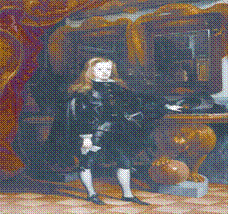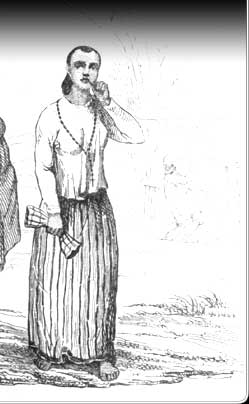
The establishment of the Spanish colony in the Marianas had encouraged outer islanders of Yap and Chuuk to sail to the Marianas to trade. The following items were traded by the islanders: turtle shells, coir fiber rope, lavalavas and tumeric paste in exchange with iron tools, like axes, knives, tinder boxes, grindstones, and lighters.
1870s: Yap became the headquarters for all major trading firms in the Pacific.
There were other traders in the Western Carolines, however, David O' Keefe supported the Spanish colony . The Spanish governor enjoyed O'Keefe's development of trade. Spain was bound by Protocol of Rome to permit foreign trading concerns to operate without interference. In the Eastern Carolines, especially Pohnpei the local uprisings in 1887, and 1890 had disrupted traders in the island fled to the outlying atolls of Ngatik, Pingelap, and even Mortlocks.
1880s: Tobacco was used as the medium of exchange.
Foreign currency was not used, except in the colony. A few sticks of tobacco could be traded with three or four dollars. Some of the most common traded goods were: colored-cloth for loin cloth, muskets, and rifles, tools of different kinds, tinned foods, broken-down wicker sofa, arm chair, blankets, casseroles, iron coffee pots, jars and bottles. Most natives would trade anything with copra.
In 1885, Spain and Germany both claimed the Carolines, and this dispute was settled by Pope Leo XIII.
Spain was given the authority to rule, and Germany was given the right to trade. Spain sent governors, and Catholic missionaries to the Carolines. Spain ruled the Carolines, in government, and religion, while Germany continues its trades and the economy of the islands remained stapled with the subsistence economy.
Sources:
1. Francis X. Hezel, S.J. A Brief Economic History of Micronesia.
(http://www.micsem.org/pubs/articles/economic/frames/ecohistfr.htm?http&&&www.mics)
2. Civics Achievement Award Program: Student Resource Book for Students in the
Federated States of Micronesia. Close Up Foundation
3. Francis X. Hazel, S.J. Strangers in Their Own Land; A Century of Colonial Rule in
the Caroline and Marshall Islands.
After reading the information given here, anyone can conclude that there was absolutely no Spanish influence in the Kosrae. The reasons can be that there were other Europeans or Americans on Kosrae, but no Spaniards. There were no Catholic missionaries on Kosrae, but only Protestant missionaries.

Did islanders get all their needs on their home islands?
The islanders did not get all their needs from their own islands, they would trade with another island. For example, when outer island of Ngatik would need more food from Pohnpei they would bring turtle and turtle shell to the main island of Pohnpei to get yam and breadfruit. Trading between islands was the only way islanders could get "luxury items" like iron tools and tobacco.
Where did the islanders get their iron tools and tobacco?
Iron tools, tobacco were mostly from whale ships, and traders who came in the early 1800s. There were more foreign ships that came to outer islands of Chuuk and Yap that brought many of those "luxury items," and encouraged a lot more trading among islands.
What group of islands did a lot trading during the Spanish times?
The outers islanders of Yap, and Chuuk were some of the expert navigators who sailed as far as the Northern Marianas to trade with Spanish people with many of the "luxury items", the islanders wanted in exchange with shells, and tortoise shells and others island goods.
What were some of the island goods that the islanders would trade with the Spanish people?
The islanders would trade in turtle, turtle shells, and copra to get many of the foreign goods.
What were some of the foreign goods the islanders wanted?
The islanders would trade to get colored-cloth, muskets, rifles, tinned foods, broken down wicker sofa, arm chair, blankets, casseroles, iron coffee pots, jars, and bottles.
Tobacco was one of the most important foreign goods that the islanders wanted so much that at one point it became a medium of exchange.
